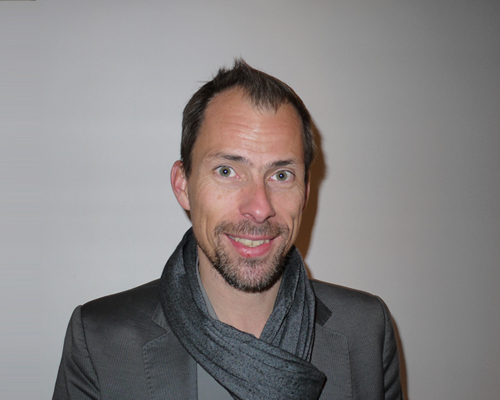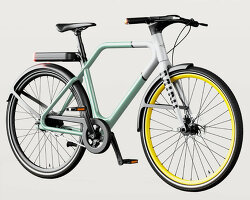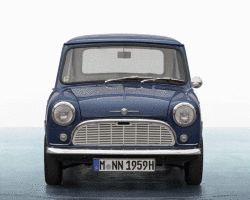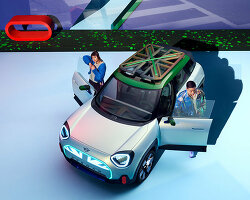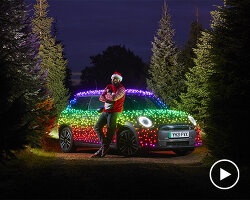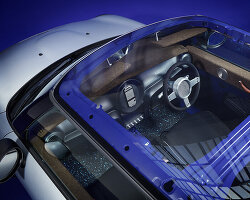anders warming – head of MINI design: interviewimage courtesy of BMW group
designboom was recently invited to mallorca to experience the all new 2014 MINI paceman and john cooper works GP, witnessing at first hand how the new compact sports cars could perform. in the first article of our three part series we featured the concept and design of the new MINI paceman. in this second article of our three-part series, we spoke with anders warming, the head of MINI design about the philosophy and development behind the sports car.
designboom: could you tell us a little bit about the evolution that has taken place with the MINI, taking us to today’s paceman?
anders warming: as far as the evolution of cars goes, if you look at other brands, you notice how each generation is updated with a nice harmony and balance. the MINI was the classic, and it remained the same shape and form for years. when we got to the 90s especially, time finally caught up with it; a lot of passive safety features, a lot of legislation amounted to the fact that the car wasn’t up-to-date in terms of the engineering features that we needed to have in cars. and obviously, that’s when the transformation that needed to take place happened. from that point, we basically upgraded the MINI where we thought it should be, as if it had 3 or 4 generations or evolutions in between, and that’s kind of how we will continue to develop the vehicle.
designboom: were you a part of the first major evolution?
anders warming: no. I was within the company, so I had followed it intensively, being an exterior designer with BMW at the time. we worked on a lot of other projects, but being part of the BMW group, I did some body kit designs on the original MINI, or at least proposals, so of course I was involved in it, but I was allocated to working with the BMW products at the time. I was asked around 2 or 3 years ago by adrian van hooydonk, who was the group design chief at the time, if I would head up the MINI brand, which I of course obviously took on, because taking care of the brand from all sides was very nice, in a sense that you get to understand the car from all angles; all reasons for purchasing whether it’s the color or material; how you touch the car; what you need to feel… obviously the geometry, the ergonomics of sitting in the car, and of course the exterior, how the car sits. it’s a big bandwidth, especially now, new features like modern use interfaces, where you have a good level of connectivity, and the things you are expecting from a car, you need to be able to oversee all of that.
MINI for me is a wonderful thing because it answers a very modern question, whether luxury can come in very small packages. if you think about houses, the ultimate luxury could be a huge house overlooking a lake; or the greatest loft space in new york with concrete floors, in a 100 sqm building in a prime location. so whats the definition of luxury? being there and having the right product, or having the biggest? cars are great when they fulfill the functional purpose, and for that reason they are larger, where MINI is clever in terms of way they use the footprint, so the question asked is how big is the car and how much can we get for it. on a geometric level, MINI – all of them, without exception, still to this day – have the shortest overhangs, meaning the wheels we have in all four corners, resulting in maximum interior space. the result is that the car is agile, because you feel that the wheels are in all four corners. so when you turn the steering wheel, it does exactly what you want it to do.
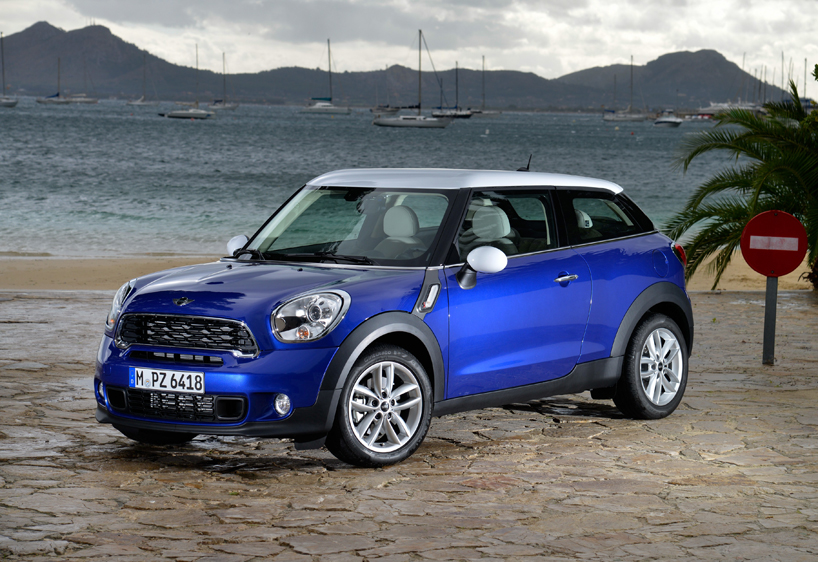 the MINI paceman in mallorcaimage courtesy of BMW group
the MINI paceman in mallorcaimage courtesy of BMW group
designboom: I noticed after driving after behind the paceman that there’s a slight rear camber in the rear wheels.
anders warming: yeah I like that too, because of that sure-footed stance. there’ss obviously some visual geometric analysis – you need to have the right balance of ‘cascading’ as we call it, meaning that the greenhouse – the body and wheel – look well. now what we can do, is enter muscle car territory, and that is something we don’t want to play with. what we need is an adequate width, relative to the length of the car, but also our main purpose is to make sure the wheels are in all four corners, that’s our biggest goal. our focus is to get as much feedback as we can from the road, because for me there’s a philosophical discussion, what is comfort? is comfort not feeling anything? or is comfort feeling something and knowing what you’re doing.
precision for instance is always something to look up to. with precision, I think you can do better things. if you have good engines, and they will keep getting better, we will be able to in a very incremental term lower the emissions. if you are not at a precise level, it’s kind of like saying ‘ok we’ll see where we’ll get’, but that’s not how things should work. engineering has a lot to do with precision, knowing excactly where the car will go, and that’s the feeling you get when you’re in the car, that you say ‘well, when I go in to the corner – I would like to up there, and you have this feeling that the car is understanding you already as you turn in. oh yeah you wanted to go there? I’ll do that for you.’ so it’s almost catering to your wish.
here’s the thing, buying a car is a big commitment in life, obviously the financial side of buying a house or a car is substantial when compared to smaller purchases – when you buy a car you are putting out serious money. on the other hand, that needs to warrant more I believe. we have to convince the customer even more so, as far as his emotions saying ‘yeah, is it really worth it?’. if there is hesitation or an instance of doubt, it’s going to be a problem. with product marketing, a big focus is on residual value, so when the cars, with what ever we do, when they end up back in the marketplace, there will still be people that have appreciation for the car, for the product, meaning that the system is staying afloat.
designboom: people tend to focus on the future of design, where we sometimes find ourselves forgetting the past. what happens when you reference the past?
anders warming: being danish, we have lots of culture in denmark, whether it’s music, artwork, architecture or furniture – there’s a lot of talk about the heritage of where we come from. so, when you design a piece of furniture in denmark, you’re always going to reference an iconic piece of furniture, always – comparing yourself to the likes of arne jacobsen. there are always these historical references as far as importance goes. what I appreciate right now in the automotive offering is that the access to good cars, is better than ever right now – cars that you can know where the brands come from, so you can appreciate them. that is something I think hasn’t happened a couple of years earlier, and now it’s really rising, where there is a big product identification, where you can focus on the fans that travel across europe to visit MINI united for example.
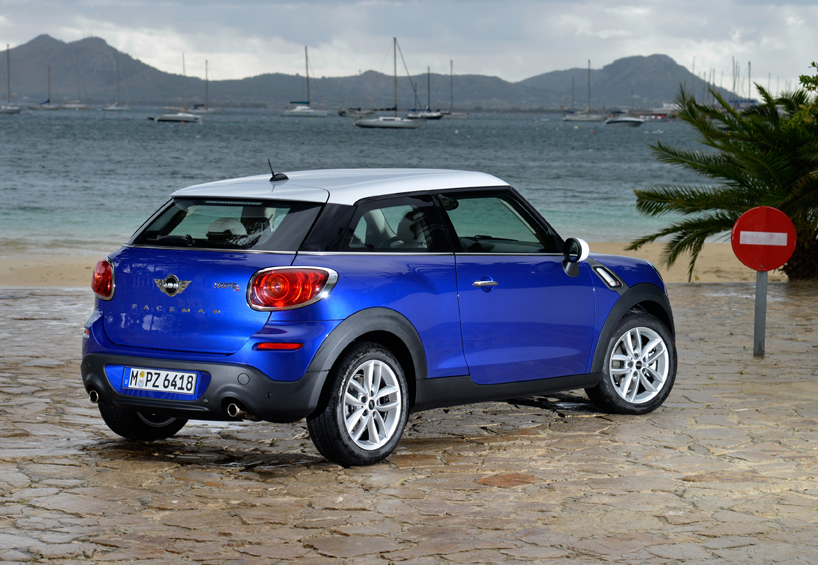 the MINI paceman in mallorcaimage courtesy of BMW group
the MINI paceman in mallorcaimage courtesy of BMW group
designboom: I know we probably already mentioned some of the difficulties in creating an iconic car, but in terms of making and developing the new paceman, what were some of the greatest challenges you encountered?
anders warming: on each car I’ve ever worked on so far, it’s the same factors every time really. obviously it’s the high emotion that has to come with the car, the passion that has to be in the car, which have to be coupled with so many rational factors; ergonomics, boot space, aerodynamics, weight saving, cost focus, marketing concepts, timing when you produce the cars and bring them to the market. in order to be successful in the current marketplace, making sure you have the most car for the money, and what I regard as a sound business case, is everything you look at, and those are the challenges. we believe we produce a premium product, so it’s always difficult living up to the expectations of a premium product. we cannot just say ‘oh we’re just happy it has four wheels’, it’s simply just not enough for the MINI. there are so many things that we have to adhere to. it has to drive well, it needs to be efficient, needs to look great, be lightweight, ergonomics is becoming hugely important, the way you sit in the car, the way the seat holds you. from your point of view, the visibility over the bonnet and the sides, visibility over the mirrors. what you see from the mirrors, the distance from the mirror when you see the next piece of the road. all these things we are calculatiing to make sure we are producing the best product out there.
designboom: what about environmental factors like emissions and fuel economy?
anders warming: it comes down to the fact that, from the point when someone purchases the car, we focus also on the costs that the customer will have after. obviously for gasoline or fuel, but also insurance, we aim to get the car in the lowest possible insurance category possible. there are certain requirements as far as bumper protection we have to adhere to, so that the premiums they have to pay for are kept low. we need to make sure that the MINI is in the proper insurance segment, so it’s as low as it can be; emissions are directly related to sustainability. you know the less fuel you use from driven kilometer, it’s part of that whole ecosystem that we want. BMW group has a huge focus on efficiency with new power trains and new drive trains, so we are focusing on developing electric engines with the iClass project which we are launching next year. we’ll be displaying cars that have the longest life on electric power, and the most fun to drive on electric power. it’s a complete new concept, but it’s a very strong commitment. now with electrical power comes a power train, that requires heavy batteries, it means the heavier the batteries, the heavier the car. now we’ve invested in a chassis technology that is carbon fiber, so that the chassis that is needed to carry the heavier batteries, is even lighter, making the car balanced. again, it’s precision and engineering that comes into play, and at the end of the day, is of course to have a healthy company producing these things, but still want customers to have the lowest cost for the best product.
4 years ago we had the MINI E, which was a completely electric MINI, that was available for purchase all over the world. in america actually, we had a huge following. obviously you would fill it up with electricity every night. when looking where I live and where I work, I can easily go to work in an electric car, and park it at work, then just plug it in. and I think that is going to be the future. then you have some people though that say ‘I like the MINI GP because it has 218 horses, so we’ll go for that’, so we need the offering for both, but even the car with the big horses still needs to have the lowest amount of emissions, so it’s all about lowering the emissions really at the end of the day. that’s one factor. another factor we have to consider are sustainable materials. we have a huge development on using materials that are made using recycled materials. many people aren’t aware of how much recycled materials go into cars already, and also part of the recycling program that BMW offers when a MINI or BMW has been driven, we take it back, recycle the car and the components, so part of our commitment is the refurbishment or these.
designboom: how do you handle this?
anders warming: well there are some logistics to it, so when your car is finished, in the sense that, for whatever reason, it’s at the end of it’s life – it might be after a crash, or because it’s been driving for several hundred thousand kilometers. we offer the possibility to take the cars back and disassemble them and make sure it gets recycled properly. it’s about being responsible about it. with that comes the investigation and developement of materials that have been grown in fields, so it’s not just about producing, but also cultivating materials. so this is a whole different mindset on how to produce materials. I personally see a lot of opportunities, because i beleive at this point, and the way we build cars, we have found ways to lets say, simplify the way we put the cars together. it might be in the future that we are actually looking at the sheet metal rather than covering it up. like in references to architecture or buildings, you see this floor now is concrete, maybe 15 years ago you would never have a concrete floor in a restaurant. you would have the concrete for the base, and then you would put the tile over, and say ‘now it’s finished’. so that mindset is also changing, and I think a luxury person understands that and appreciates that. authentic materials. so that’s also a big focus right now.
designboom: going back to the MINI E, do you think that the biggest thing holding back the electric car market, is the infrastructure?
anders warming: there’s nothing holding it back from my stand point. I think actually the MINI E works in peoples lives today. when people drive a MINI E, there’s no one complaining about the infrastructure, because you make it work with the life you have, especially in america, because a big part of the test was to have the cars driven there because the roads are so much longer there. I mean in london, the MINI E is going to work perfectly. in munich it’s gonna work as well even though there are longer distances, but how is it going to work in los angeles, where you have an average commute of 80 miles or something like that. it still works, and that was a big test, but no one has been complaining about the infrastructure, because you will find the plug. that’s the feedback so far, it doesnt mean that the infrastructure cannot be improved, but so far the MINI E and other product we have, is called is the active E, which is a BMW 1 series, which also works in people’s lives.
we are proud of this, because we have a strong commitment to this. you can say, ‘let’s take a back seat and wait for this whole E thing to happen’, but BMW went out front, we made plans for it, for the carbon fibre technology for the chassis, we have the battery development on a high level. this is a huge, huge, investment and commitment to the technology. it’s not an overnight sensation either, it’s here to stay. I am convinced of this.
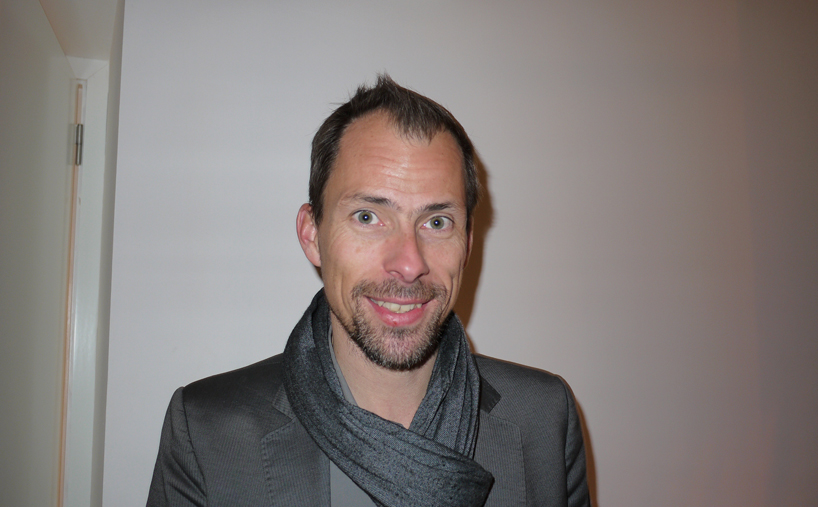
anders warming, head of MINI designimage © designboom
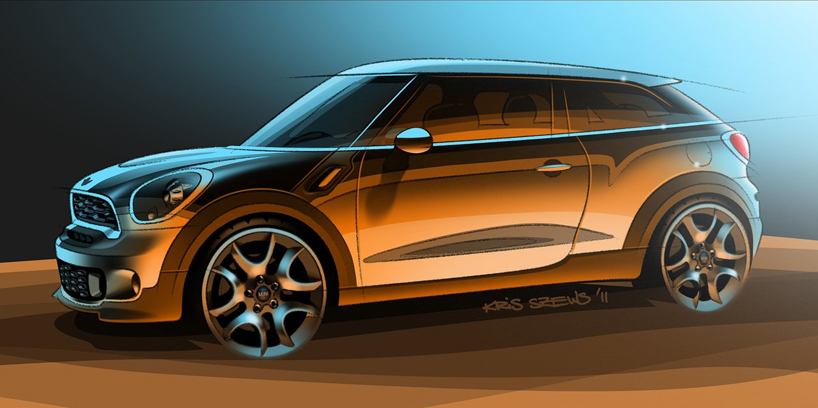
concept sketchesimage courtesy of BMW group
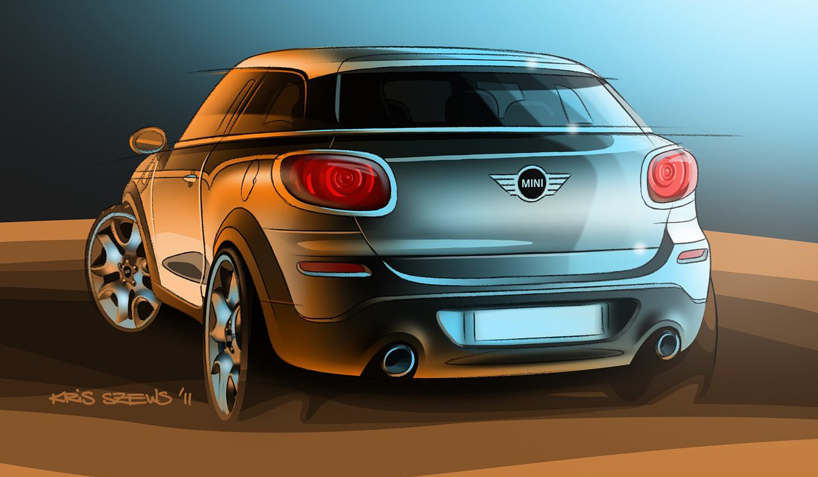
concept sketchesimage courtesy of BMW group
MINI (72)
PRODUCT LIBRARY
a diverse digital database that acts as a valuable guide in gaining insight and information about a product directly from the manufacturer, and serves as a rich reference point in developing a project or scheme.
